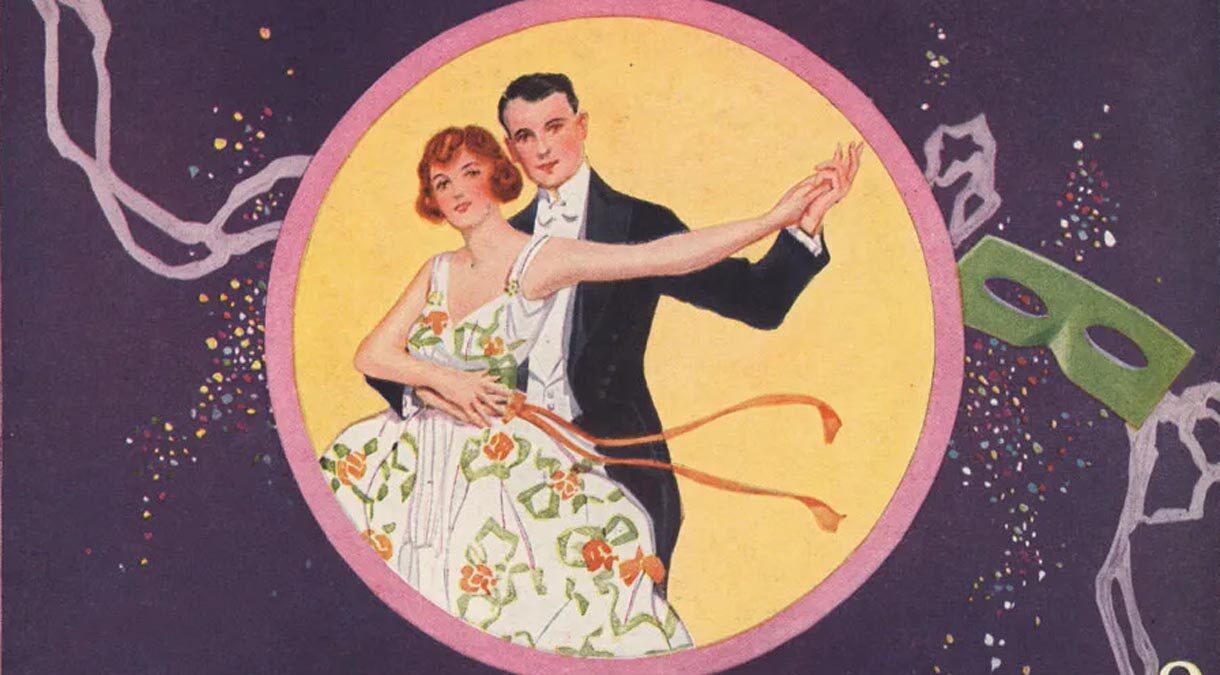“Slow Music” (Lax-Craig). Recorded in B Studio, Hayes, Middlesex on October 17, 1928 by the Rhythmic Eight (under the musical direction of John Firman) with vocalists Maurice Elwin, Arthur Lally, and Johnny Helfer. Zonophone 5233 (and Salabert FZ-950) mx. Yy-14801-2.
Personnel: John Firman dir. Sylvester Ahola-t / Arthur Lally-cl-as-bar-v / Jack Miranda-as-bar / Johnny Helfer-cl-ts-v / ?Bert Read-p / Joe Brannelly-bj / Billy Bell-bb / Rudy Starita-d / Maurice Elwin-v
“Slow Music” is, paradoxically, an eminently memorable song that has been almost entirely overlooked by artists; indeed, the Rhythmic Eight recording of it may be the only one ever made. Even the songwriters are obscure. “Lax” being a comparatively rare surname, I would venture to guess that one songwriter was the Arnold T. Lax whose hometown newspaper declared him to be a “second [Irving] Berlin,” 1 although I do not recognize any of his other known compositions, while “Craig” (presumably misspelled on my Salabert disc as “Graig”) might be the Edward F. Craig who collaborated with Lax on one other song. 2
The only recording, then, of “Slow Music,” was made at an unusual Rhythmic Eight session where Maurice Elwin, at that time the band’s go-to singer, was joined in a vocal trio by saxophonist Arthur Lally and reed player Johnny Helfer. The three work together exceptionally well. Elwin’s voice is readily identifiable throughout. In “Slow Music,” I was surprised not to be able to detect the familiar idiosyncrasies of Arthur Lally’s voice (which can be heard speaking and occasionally singing on quite a few British dance band records — perhaps best in the Million-Airs’ “Just a Crazy Song”), but the final song recorded at the October 17, 1928 session, “This Is the Way the Puff-Puff Goes,” features only Helfer and Lally doing distinct vocal parts, and there Lally is definitely recognizable.
The Rhythmic Eight’s “Slow Music” features a mesmerizing arrangement, and the vocal harmony evokes a moody atmosphere. It is funny to note that this, the only known treatment of the song, is not particularly slow — a detail which may be due entirely to the judgment of director John Firman.
The recording serves as a reminder that Elwin was a singer who frequently collaborated in duets, trios, and even quartets (as with the Ramblers). I never seem to have difficulty detecting his voice in a group, but that is not to say that he dominates the overall sound unduly or fails to blend with his collaborators. Rather, I would say that he possessed certain vocal strengths that stand out in almost any context. The Rhythmic Eight themselves definitely stand out as a virtuoso group on this occasion, as always, with Sylvester Ahola’s trumpet performance being particularly noteworthy.








